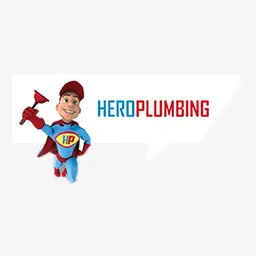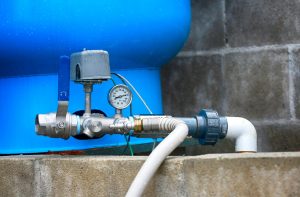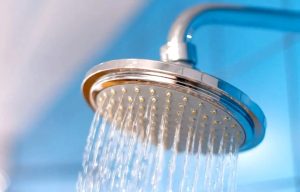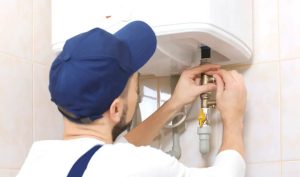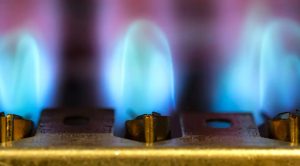Table Of Contents
- Hot Water Temperature Control Valve Compliance
- Where Is The Hot Water Tempering Valve Located?
- Process Of Hot Water Temperature Control Valves
- Benefits Of A Hot Water Tempering Valve
- Types Of Hot Water Temperature Control Valves
- Hot Water Tempering Valve Adjustment Signs
- Hot Water Tempering Valve Adjustment
- Tempering Valve Adjustment Precautions
- The Lifespan Of Hot Water Tempering Valves
- Maintenance Tips For Hot Water Tempering Valves
- Picking A Plumber For Tempering Valve Adjustment
- Have Your Hot Water Tempering Valve Adjusted
A hot water temperature control valve facilitates mixing hot water from your hot water system with cold water to allow safe water delivery to the tap fixtures in your home, including vanities, baths, and showers. The valve regulates the water temperature by ensuring that the water does not exceed 50 degrees Celcius to prevent scalding.
Additionally, the valve keeps the hot water in your tank above 60 degrees Celcius to prevent the growth of both germs and Legionella bacteria in the tank. The local building codes in Australia stipulate the temperatures mentioned above. Thus, knowing how to adjust the hot water temperature control valve is critical.
This article provides a comprehensive guide on changing the hot water tempering valve. However, before checking on that, we will look at some vital aspects of the hot water tempering valves you need to know.
Hot Water Temperature Control Valve Compliance
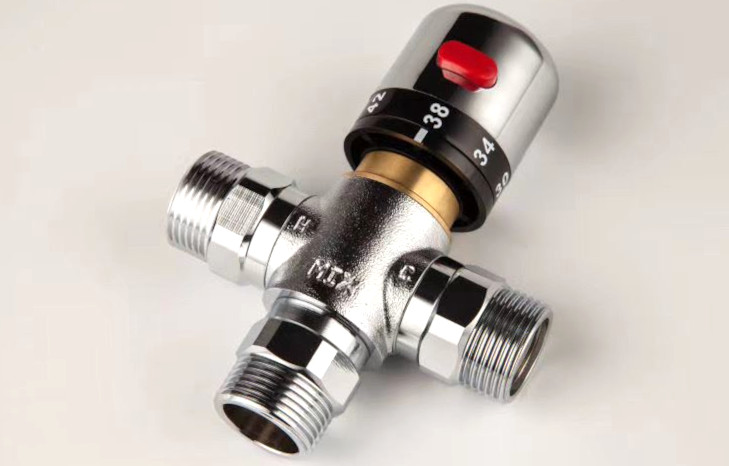
A hot water temperature control valve is a temperature-activated three-way mixing valve. This valve is designed to maintain the high water temperature stipulated by local building codes for hot water tanks while also delivering perfectly heated water to your taps. When the water is in the tank, the temperature is above 60 degrees.
As mentioned before, this helps kill germs and harmful bacteria inside the tank. However, when you turn on the tank, the hot water is mixed with cold water to attain a standard temperature of 50 degrees Celsius. The hot water tempering valve mixes the hot and cold water before reaching your taps. This helps prevent scalding instances while using it for different household tasks.
Where Is The Hot Water Tempering Valve Located?
The hot water tempering valve is usually located outside your hot water system, between the hot and cold water lines. The cold water moves from your water supply through the inlet valve and goes to the hot water tempering valve, which mixes with hot water. Then, the tempered water is released to various fixtures in your kitchen, bathroom, or laundry taps.
Process Of Hot Water Temperature Control Valves
Before diving into the working mechanism or process of temperature control valves, it’s essential to first understand the structure. This valve has four major components: the sensor, temperature detecting element, controlling medium, and power source.
The temperature-detecting element is a sensor that facilitates the transmission of a mechanical or electrical signal to the actuator. The valve works on an automatic temperature-measuring device and uses a filled bulb as the temperature sensor.
The hot water tempering valve material features thermal expansion properties that cause it to expand when the temperature rises. The expansion then triggers stress in the actuator’s pressure.
Finally, the pressure changes the valve’s position on the regulator controlling the coolant’s flow rate. The hot water temperature control valve has two temperature control methods which are discussed below:
Mixing of cold and hot fluids
The valve sets the cold and hot process fluids in Tx and Ty temperatures in this control method. The hot water tempering valve is set so that the cold process fluid mixes with the hot process fluid to attain the desired temperature. The temperature sensor is usually placed in the hot process fluid.
Ty measures and then directs the fluid temperature to the controller with the set Tx. The controller detects the change when the fluid’s temperature goes beyond Ty. The valve lets the cold process fluid mix with the hot process fluid until the desired temperature is attained.
Heat exchange between the cold and hot process fluids
In this method, energy is transferred between the cold and hot process fluids instead of mixing the fluids, as is the case with the first method. The hot fluid passes through the shell of the exchanger, while the cold fluid passes energy via the tube. The hot fluid passes the energy to the cold one.
The increase in the cold fluid temperature is controlled and sensed by the temperature transmitter or sensor and sent to the controller. The temperature controller keeps the hot water temperature control valve shut or open based on temperature rise. The valve remains open and allows energy transfer until the desired temperature set point is achieved.
Benefits Of A Hot Water Tempering Valve
A hot water tempering valve offers the following benefits:
Offers protection against scalding
Scalding is one of the most common accidents from hot water heaters. Water temperatures could rise or fall regardless of the setting. Therefore, a hot water tempering valve helps control the temperature and ensures it does not exceed the safe standard of 50 degrees Celsius. This helps prevent scalding while using the hot water from your fixtures.
Ensures enough hot water supply
With a hot water tempering valve, you can rest assured of enough hot water in your home. The valve is usually set to ensure that there is a balanced mix of hot and cold water in your system. Consequently, you will always have hot water for your various uses at home. Regardless of whether you have a large or small tank, the valve ensures a constant and safe flow of hot water in your fixtures.
Offers protection against diseases
Bacteria can grow inside your hot water tank if the water temperature is below 60 degrees. A hot water tempering valve is therefore necessary as it ensures that your tank temperature is consistently above 60 degrees. This ensures that germs and bacteria that could cause diseases don’t thrive in your hot water tank.
Types Of Hot Water Temperature Control Valves
There are different types of tempering valves. While their primary purpose is the same, they function differently. The most suitable type is based on your hot water system’s size and type of the system. It is, therefore, critical to consult with your plumber to help determine the type of valve to install for your hot water system. Here are the types you can have in your home.
Blue
A blue valve is the most popular type in most Australian homes. It is used in electric water heaters to provide temperatures ranging between 65 to 75 degrees.
Green
This valve is commonly found in gas hot water systems like the tankless continuous flow types. However, if you have a newer gas water heater model, the system may have a preset default temperature of 50 degrees Celsius. As a result, you might not need a hot water tempering valve for it.
Orange
This valve is suitable if your home has a solar hot water system or heat pump. It’s applied when the hot water reaches a boiling point.
Black
The black valve is suitable if you have a large-capacity hot water system. Thus, you can have it installed in your commercial property or large home.
Hot Water Tempering Valve Adjustment Signs
When you realise your hot water valve is not working correctly, you should check it immediately. This is a sure sign that there is something wrong that requires adjustment. Here are some of the likely signs that your valve requires adjustment.
Problem with water temperature
If the valve isn’t working correctly, you realise that the water becomes hotter than required. This is an indication that the valve isn’t regulating the temperature accurately. It has a problem cooling hot water down to make it safe for use. Excess heat isn’t the only problem.
You might realise that the water is not hot or not running consistently at the desired temperatures. The water temperature might change from hot or cold. This shows that the cold tap is affected, making it run hot or warm instead of cold water. A blocked valve can cause problems with the water temperature, or the valve might have moved out of its position.
Reduction in water pressure or flow
Another sign is a change in how water flows out of the fixtures, such as the showers, kitchen taps, and other fixtures. You find a reduction in the pressure or flow of the hot water. For instance, the water may start flowing slowly and sluggishly.
The water might also switch from running normally to running at a slow flow or pressure. The problem might occur if some parts of the valve have limescale or debris. If your valve is old, it might be corroded, leading to the blockage. Besides, the valve might have been fitted incorrectly.
Drips or leaks
If your valve has problems, you might start seeing some water under it. This signifies a leak caused by either a corrosion problem or a faulty seal. For instance, a faulty valve makes your shower drip even when you have put it off. This indicates that the valve is in the wrong position or has problems with the cartridge or seals.
Unusual noises
If you hear a rumbling noise from your hot water system, this can be an indication that your valve is damaged. The noise may result from overheating due to the accumulation of debris on the tempering valve.
Hot Water Tempering Valve Adjustment
Now that you know how the tempering valve works and signs it requires adjustment, we can look at how to adjust. It’s worth noting that the adjustment should be made based on the type of tempering valve you have in your home.
So, we shall look at how to adjust the different valves. Adjusting the tempering valve is not complicated, regardless of your hot water system. The most critical thing is to be careful to avoid accidents during the process.
Adjusting manually operated hot water tempering valves
Manually operated hot water tempering valves are used in water heaters or hot water cylinders. These are standard valves installed by your plumber, and you can simply adjust them by hand to attain the desired temperatures.
One important thing to note is that these valves don’t respond to changing conditions independently. When you find that the water is getting colder from your fixtures, you can turn the manual tempering valve clockwise to allow less cold water into the mixing process.
This makes the output water temperature hotter. In the same vein, if the water temperature is higher than desired, you can adjust the manual tempering valve by turning it anti-clockwise. More cold water is brought into the mixing process, lowering the output water temperature.
Adjusting automatic hot water tempering valves
Here are the steps to follow when adjusting an automatic tempering valve.
- Before you adjust the tempering valve, you should turn on the hot water system and deliver water at the correct temperature. If your hot water tank has a thermostat, it’s good to set it at 60 degrees. Ensure the water heater has attained the set temperatures before commissioning the tempering valve.
- Determine the mixed water temperature at the nearest tap. Open the tap to allow a hot water flow rate of at least four litres a minute. Use a thermometer to ensure that you attain the correct water temperature. Let the water run for around a minute to set the hot water temperature after every adjustment.
- First, remove the cap to access the adjusting spindle to adjust the hot water tank tempering valve. Rotate the adjusting spindle to attain the desired temperature. You should rotate the spindle clockwise to minimise the temperature and anti-clockwise to increase the temperature until you reach the desired temperature.
- Once you attain the desired temperature, snap the cap onto the tempering valve to avoid accidental adjustment.
Tempering Valve Adjustment Precautions
When making the hot water temperature control valve adjustment, you need to be careful since a small mistake in the process can cause severe problems. If you set high temperatures, the hot water produced can cause scalding.
On the other hand, if you set a lower temperature than recommended, you won’t have hot water for your daily use. Bacteria might also grow in your hot water tank leading to health issues. Here are some mistakes to avoid.
Performing a DIY tempering valve adjustment
You might feel you have the skills to make the valve adjustment, but it is always advisable to leave the job to a certified plumber. The plumbers know all the building codes, so they help adjust the valve according to the set codes. Besides, they have the skills on how the hot water system works, so that they will do an excellent job in the adjustment process.
Failure to determine the temperature of water from the Tap
Before you set the hot water tempering valve, you shouldn’t forget to measure the temperature of the water running from the nearest tap. Measuring the temperature helps ensure the water temperature is suitable for different household tasks such as bathing, washing dishes, etc. So, make sure you have a thermometer with you.
Adjusting the valve in a rush
Sometimes you may be in a hurry and want the work done quickly. However, this is a great mistake since you may not get the right temperature. After each adjustment, you should give time for the water to attain the set temperature and determine whether it’s the correct one for your daily use.
The Lifespan Of Hot Water Tempering Valves
Your tempering valve can last for around five to eight years. This is about half the lifespan of your hot water system tank. Thus, you will likely replace your valve twice before your water tank.
Maintenance Tips For Hot Water Tempering Valves
Here are tips to increase the lifespan of your hot water tempering valve.
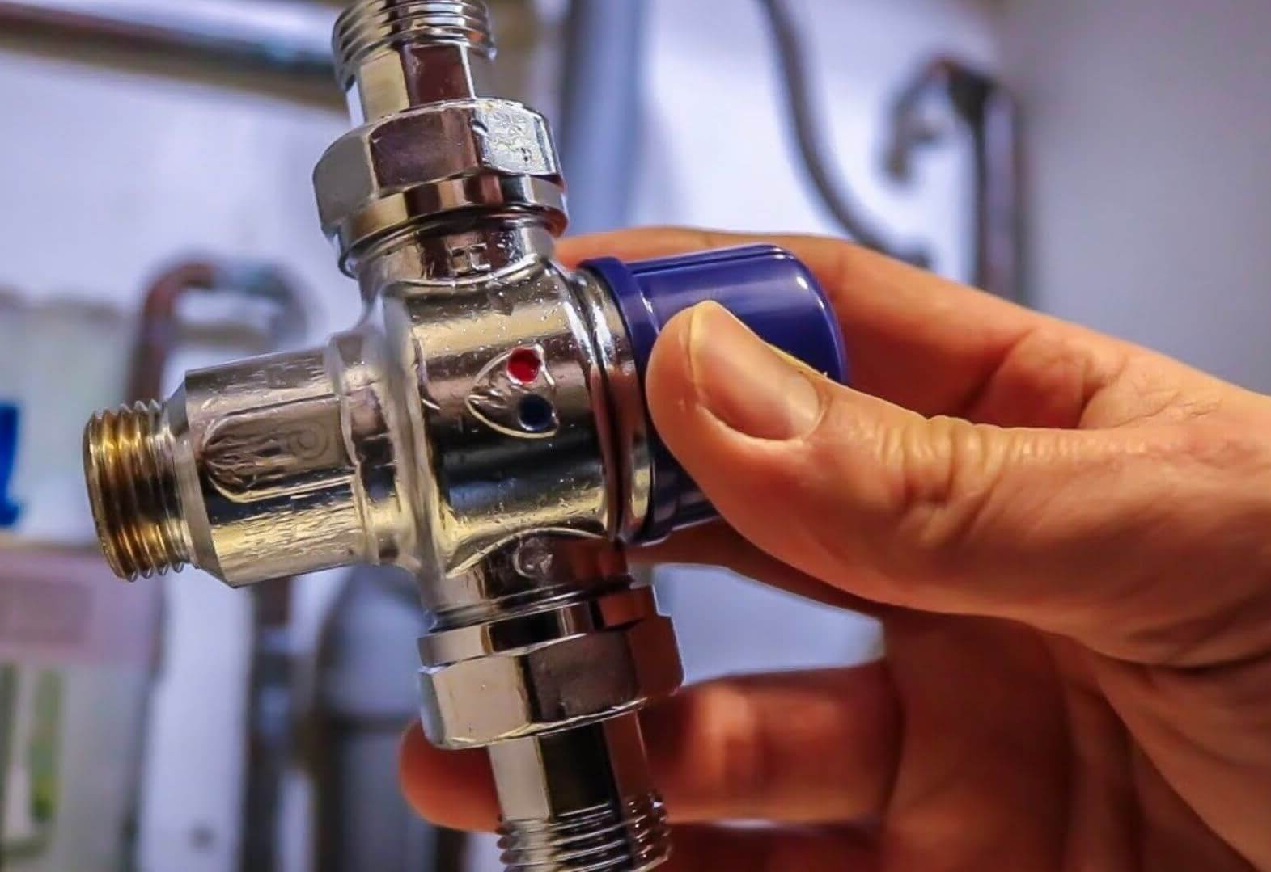
Perform regular inspections
Performing regular inspections is critical to avoid issues with the tempering valve. During the inspection process, you can identify problems that need quick fixing. It allows you to prevent accidents that may arise because of scalding. You also ensure it maintains the correct tank water temperatures and prevents bacteria growth that might contaminate your water.
Install an inline filter
Most issues with the valves can be traced to the accumulation of debris. A filter stops the debris from entering your system. If you have the inline filter installed, make sure you check it regularly to ensure it’s also debris free.
Upgrade your hot water tank
If you realise that your system’s hot water tempering valve constantly has issues, the problem might be due to an old hot water tank. Old hot water tanks are susceptible to corrosion that can damage your inline filters. So, if your tank is almost twenty years old, it’s advisable to replace it.
Picking A Plumber For Tempering Valve Adjustment
When you realise that your hot water tempering valve has issues, you must consult a plumber to check and make the adjustments. It is recommended you work with a certified plumber so that they can adjust according to the set building codes. Here are a few things to check out when looking for a plumber to help in the process.
Experience and reputation
It’s good you work with a plumber with vast experience and a good reputation in making tempering valve adjustments in Australia. This gives you an assurance that they will inspect and adjust accordingly.
Before you hire, be sure to ask them the number of years they have done the job and the reputation they have developed with their clients. During the adjustment process, the plumber accesses your property, so you should work with a plumber with a free criminal record.
Pricing
Plumbers charge different prices for the services they offer. When looking for a plumber, look for one with affordable pricing for the tempering valve adjustment. But note that affordability doesn’t mean you work with a cheap plumber. Look for a plumber charging an affordable and reasonable price so that you can also be guaranteed high-quality work.
Location
You should work with a local plumber who can access your home fast anytime you need a hot water tempering valve adjustment. A local plumber can also charge a lower price than those located far from your home.
Have Your Hot Water Tempering Valve Adjusted
From the article, you have learned the critical roles that a hot water tempering valve plays in ensuring you get hot water at the correct temperatures. So, whenever you have an issue with your water temperatures, have the valve checked by a trustworthy plumber near you so that they can adjust it accordingly if it is causing the problem.
With an expert plumber, you can rest assured it will be adjusted professionally, allowing you to have a good supply of hot water in your home.




